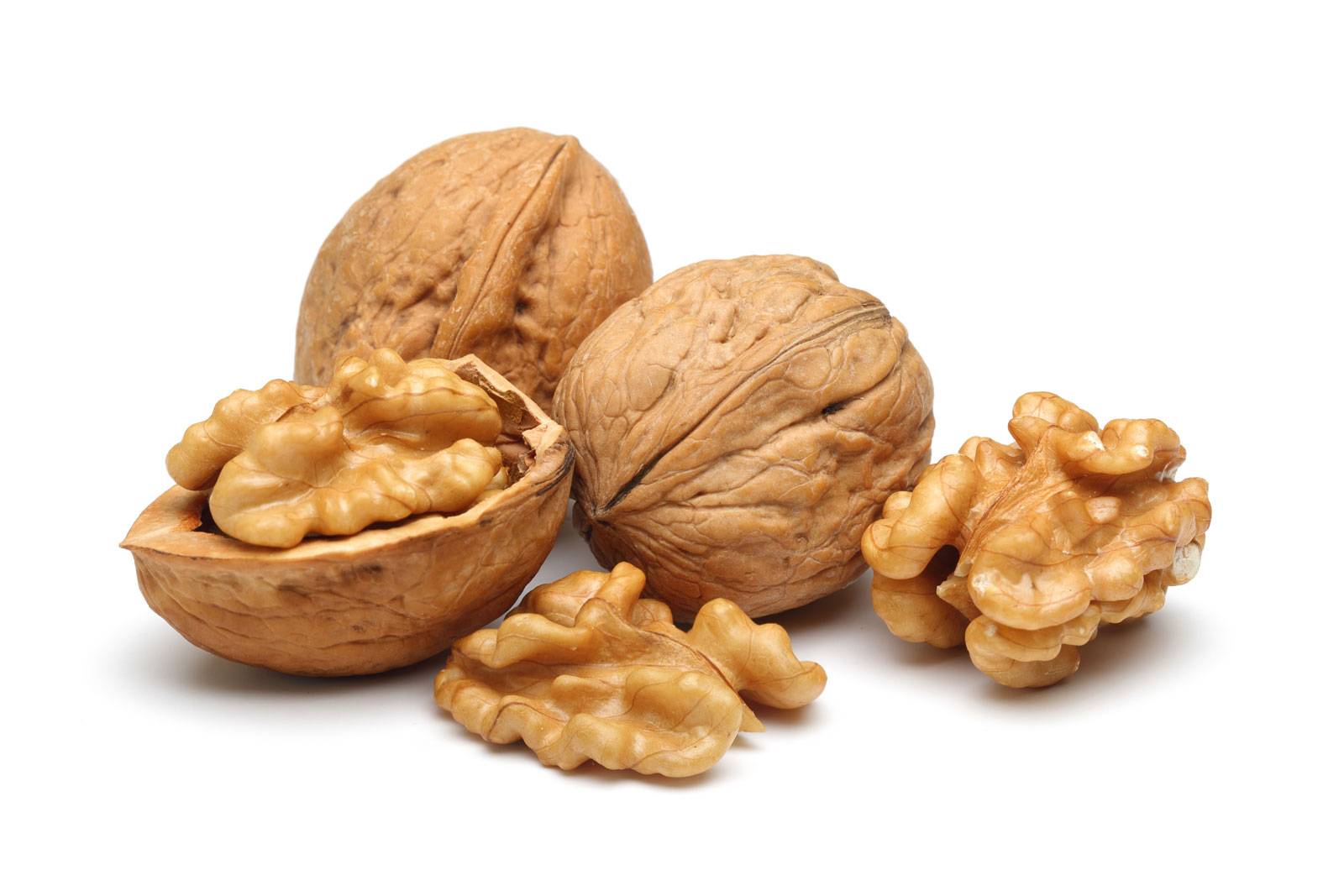
Health Benefits:
Aids in weight loss
Aphrodisiac
Helps increase menstrual flow
Increases Sex Hormones & Orgasm
May reduce cholesterol
May reduce risk of Alzheimer
May reduce risk of cancer
May regulate blood sugar
Pain reliever
Reduces risk of bladder cancer
Reduces risk of breast cancer
Nutrition:
Serving size: 1 cup; Calories: 523; Fat: 52g; Cholesterol: 0mg; Sodium: 2mg; Carbs: 11g; Fiber: 5; Sugars: 2.1g; Protein: 12g; Potassium: 10% DV; Vitamin A: 0%DV; Vitamin C: 1%DV; Calcium: 7%DV; Iron: 12%DV
Did You Know?
- Walnuts are a good source of magnesium. Low magnesium diets have been linked to reduced insulin sensitivity and increased risk of type 2 Diabetes
- Walnuts are only harvested once a year, between September and November
- 99% of the US walnut production is concentrated in California
- Good source of monunsaturated fatty acids and excellent source of omega 3 essential fatt acids linoleic, alpha-linolenic acid
Ways to Eat:
- Raw
- Baked
- Roasted
Farming Trivia:
- The Greeks called walnuts karyon, meaning “head,” because the shell resembles a human skull and the walnut kernel itself looks like a brain!
- Walnuts have been a traditional food in diets from the Mediterranean, South America, and Asia and can be used in sauces, stuffing, entrees, snacks, appetizers, and desserts
- California has about 227,000 walnut-bearing acres, and in 2010 the walnut crop is expected to be 510,000 short tons, a record production
Note: Always consult a physician for any specific health questions and concerns. Some of this information may be subject to change should there be any new findings from Federal Health Administration (FHA), Food & Drug Administration (FDA), American Medical Association (AMA), American Cancer Society (ACS), and / or other leading food, nutrition and medical advisors.

